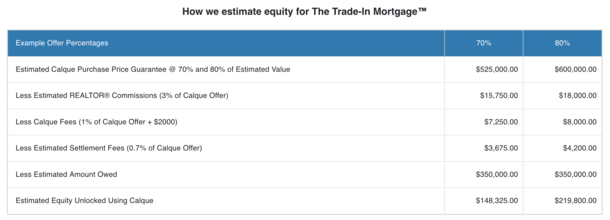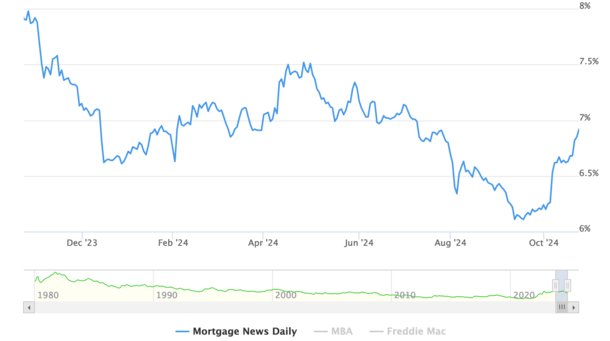Annaly plans more competitive MSR buying with Rocket pact
unitedbrokersinc_m7cmpd2024-10-24T19:23:06+00:00Annaly Capital Management plans to be more of a contender in the market for servicing rights as it brings on nonbank giant Rocket Mortgage to help it subservice and recapture loans. "We expect it to increase our competitiveness in purchasing new MSR," said David Finkelstein, the company's chief executive, investment officer and director, during an earnings call in which the real estate investment trust reported weak results relative to some consensus estimates.His comment suggests the market for servicing rights could heat up as a result of the partnership set to start in December if it puts Annaly, which has been ranked the largest mortgage real-estate investment trust in the business, in an advantageous position.Whether it will or not depends in part on the company's financial position.The company generated just $0.05 in earnings per common share under generally accepted accounting principles during the third quarter on nearly $82.4 million in net income. Its EPS adjusted for nonrecurring items represented earnings available for distribution was $0.66.The GAAP number was significantly lower than the Standard & Poor's IQ consensus mean of $0.82 but the earnings available for distribution nearly matched estimates that it would report $0.67 for that figure.In comparison, the adjusted or normalized figure for Annaly's EPS was $0.68 in the second quarter of 2024 and $0.66 in the third quarter of last year. Under standard accounting principles, Annaly generated losses of $0.90 and $1.21 in these respective periods.Revenue at Annaly was $13.4 million. This was significantly lower than the $407.23 million consensus estimate. Annaly's revenue was $53.56 million the previous fiscal period and $384.41 million in the third quarter of last year.Annaly's revenue equates to net interest income with realized gains and losses on rate swaps deducted.Real estate investment trust earnings under standard accounting principles reflect fluctuation in the market valuations of their investments, so this often differs from their EAD, which is considered a key number for them because they must distribute at least 90% of their income.Servicing valuations have affected some mortgage companies' third-quarter earnings, as interest rates fell during the period."Lower rates adversely impacted MSR values for the quarter by $0.06 per share," Chief Financial Officer Serena Wolfe said during the company's earnings call. Falling rates typically hurt the value of mortgage servicing rights, but whether they do now depends on several factors, including whether the drop exposes loans with a lower coupon rate to prepayment incentives or not.Mortgage rates that impact MSR values have stabilized since the third quarter, and companies like Annaly and Mr. Cooper continue to see reason to invest in them, with the latter recently agreeing to buy a large portfolio from the recently rebranded Flagstar.Companies who like mortgage servicing rights as an asset but don't want to take on operational responsibilities for them like Annaly are in a more advantageous position right now, Finkelstein said during his company's call."Competition in the subservicing market should benefit financial participants like Annaly," Finkelstein said.When asked whether that has impacted pricing for subservicing, Ken Adler, head of MSRs and portfolio analytics, said, "There's been a contraction in the share of overall mortgage servicing rights handled by subservicers, and that's created a lot of competition in the market."In addition to the Rocket subservicing agreement, Annaly's business accomplishments during the quarter included six non QM securitizations totaling $3.3 billion through its Onslow Bay correspondent unit, the largest nonbank sponsor in private residential credit.The company also added $560 million in additional warehouse lending capacity during the quarter and more recently, it has diversified its sources of it in line with an industry trend that's led in part by Mr. Cooper."Post quarter-end, we implemented an additional MSR warehouse facility for $300 million, adding to our substantial availability," Wolfe said.Finkelstein indicated that the company is being cautious about liquidity, leverage and duration exposure given the interest rate environment and potential for volatility in an election year and has no immediate plans to change its capital position."We feel like we have greater resources now to be able to make investments in things like technology as well as broadening the correspondent channel," he said.As of early afternoon, Annaly's stock was near starting levels close to $19.50. It had fluctuated after the release of earnings between roughly $19.45 and just above $19.60.The company is a favorite of billionaire investor Bill "the Bond King" Gross, who has recommended it as a defensive stock, according to Bloomberg. Annaly invests in mortgage-backed bonds as well as servicing rights and other residential assets.


